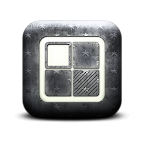There are many different translations of the Bible, and much debate has occurred over the question "Which version is 'the right' version?" Most of the translations are incredibly similar, having only the language used modified to a more modern form of English. The very first and foremost thing I will say about this is that it is a personal decision, and one which, if you feel strongly about it, you should simply pray and ask God to guide you in this area.
If you're new to the faith, and you are unsure what version of the Bible you should get, I would recommend either the New International Version (NIV) or the New American Standard Bible (NASB), with the NIV being the more "popular" of the two (as in more people use it). If you're comfortable with an older English verbiage, the King James Version (KJV) is the most widely used version of the Bible globally, and probably the easiest to obtain. If you are in attendance with a congregation, you might also talk to the leader of the congregation as to what version they use for reading if you want to be able to follow the reading easier.
Since so many are unfamiliar with the older Elizabethan English structure, and even fewer are familiar with Greek and Hebrew, most posts on this blog will use Bibles with more modernized language, such as the New International Version (NIV) or the New American Standard Bible (NASB). If you are for some reason uncomfortable with these choices, or wish to verify the text, feel free to follow along in your own preferred version.
Why are there multiple translations? If you've ever used an automatic translation service on the web, had someone interpret for you, or if you are multi/bi-lingual, then you're going to already have a leg up in understanding the concept of modifying the language structure for the understanding of the target audience. Many languages put describing words after the object they're describing, such as "that is a house beautiful" rather than the English structure "that is a beautiful house". Certainly, both have the same meaning, but the latter is much more readable than the former, and therefore would typically be chosen by a translator to give to the people they are translating for.
One of the greatest things I've found for my reading and study is the Blue Letter Bible. It's a web site that hosts many different translations, and allows you to compare them. It also has many useful deeper study tools available. They have mobile applications as well for Apple's iOS (iPhone, iPod Touch, iPad).






